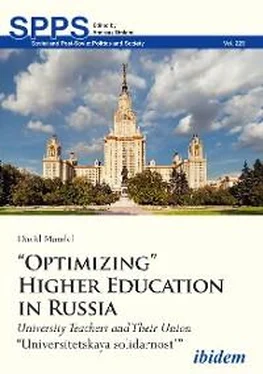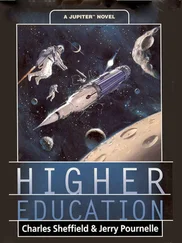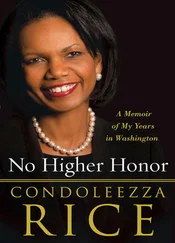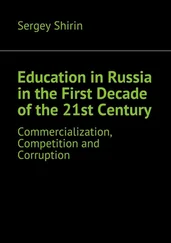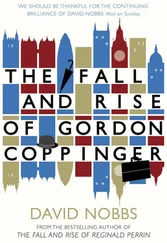There was no concept of tenure in the Soviet Union, but once hired, university teachers could expect to keep their jobs for life, as long as they conformed politically. Party membership, not easy to obtain for intellectuals in the later Soviet period (unlike workers, who sometimes resisted insistent invitations to join), was obligatory in politically sensitive disciplines, such as economics, history, or philosophy, which were under strict ideological control. Sociology, banned under Stalin, was resurrected after his death, but mainly as an applied (fact-gathering and analysis), rather than theoretical discipline. Courses in Soviet Marxism and party history were obligatory for students in all disciplines.
Power in the educational system, as in all social and political institutions, was highly centralized. Organization and financing were decided and administered centrally. In universities and in the more specialized institutes of higher learning subordinated to the various economic ministries, a strong basic education was combined with specialized training that prepared students for future employment. Tuition was free, and students who performed well received stipends, which could easily be supplemented by summer jobs. Employment after graduation in one’s field of specialization was guaranteed—the state’s job assignment was mandatory. 5
Teaching personnel in institutions of higher learning, unless they were members of the party committee or held administrative positions, did not participate in important decisions. The most significant decisions were taken centrally beyond the university, including the disciplines and subjects to be taught, admission quotas, educational standards, workloads and remuneration.
The Trade Union of Workers of Education 6, Higher Schools, and Scientific Institutions embraced all the employees of these areas, including the administrators. It functioned in practice as an arm of the state and of the local university or institute’s administration. The main focus of their activities was the administration of social benefits. After 1985, especially under Gorbachev’s perestroika , central state control of education was somewhat relaxed, but the union never assumed a significant degree of independence from the university and state authorities, nor did its basic functions change.
The October Revolution opened and greatly broadened access to higher education for the children of workers and peasants, and also for their adult members. And while the state clearly emphasized the role of education in the formation of the skilled labour force required for economic development, it also framed education’s mission in humanistic terms, as favoring the spiritual development of individuals and of society as a whole. 7The downside of this professed humanism was the imposed, crude “ideologization” of higher education, which included mandatory courses in “marxism-leninism,” the history of the Communist Party, and the like.
Soviet parents often invested considerable energy and financial resources in their offspring’s accession to higher education, which was a prestigious and widely-shared goal. Evening and extramural higher education was also widely developed, the law providing special conditions for working students enrolled in these programmes. Students in higher education were generally motivated to learn, since at least equally well-paid jobs not requiring higher degrees were available in industry. For those enrolled in full-time programmes, the university years became a cherished period of their lives, and the friendships established then often endured long afterwards.
The decade under Boris Yeltsin, the first president of the newly-independent Russian Federation, came to be known popularly as the “wild 9nineties.” This was a period of what Marx had termed “primitive accumulation”—the forced dispossession of toilers of their means of subsistence. The latter, according to the constitution inherited from the Soviet Union, were the collective property of the nation as a whole. The rapid privatization of the economy in the course of the 1990s assumed the form of massive corruption and theft. These were not only tolerated, but actively promoted by the government. 10
Formally, the new Russian state was, and still is, a democracy. But since Yeltsin’s coup d’état and artillery bombardment of the Supreme Soviet (the dominant state institution at the time) in October 1993, the executive branch of the government has been free of any significant outside control. Under this “managed democracy”, the state’s tolerance of individual and collective freedoms (which remain, nevertheless, significant on the background of most of Russian history) is conditional upon their not limiting the government’s freedom of action in matters that it considers important.
“Shock therapy,” a policy of forced, rapid transition to capitalism, actively promoted by the G-7 and the international financial institutions that they dominate, thrust Russia into one of the deepest and most prolonged depressions experienced by an industrial society. 11Throughout the decade, the government was determined to stay this course, regardless of the social and economic costs to the mass of the population, which was unable to mount effective resistance.
By 1998, real GDP had fallen to around a quarter of its 1992 level. Popular incomes plummeted, along with the state’s social spending. Government expenditure on higher education as a part of GDP fell in this period from 1.21% to 0.040%; funding per student decreased by 70% compared to the end of the 1980s. 12Besides a catastrophic reduction of teachers’ salaries, institutions of higher learning struggled to survive by attracting various forms of non-state funding: tuition-paying students, commercial use of real-estate under their control, the sale of services, grants from private sources. These activities were legalized by the 1992 Law on Education, which also permitted the establishment of private universities.
In these conditions, the centralized control of education of the Soviet period necessarily gave way to broad decentralization and so expanded autonomy of educational establishments, as there was no other way for them to survive. 13It was not until well into the next decade that the state began to intervene actively again in higher education.
For university teachers, the freedom to teach, to conduct research and to publish was the main positive outcome of the Soviet Union’s demise. While the government still formally required its approval of programmes, in practice teachers were free to teach as they wished. “It was a period of full freedom—you did what you wanted,” recalled an economics teacher at Moscow State University. “It was the most interesting and creative time. I wrote a textbook that passed through three editions. There were a lot of different views, discussions, arguments. It was interesting!” “From an intellectual point of view, the 1990s were the best years of my life,” recalled a philosophy teacher at St. Petersburg’s Mining University. “We obtained access to books and translations and we could teach and say whatever we liked, without fear.”
This new intellectual freedom had the most meaning for teachers of the humanities and social sciences, since the natural sciences had not been subject to significant ideological control. But changes in this period also allowed a measure of teacher participation in university affairs, notably in the election of department chairpersons, faculty deans, and rectors, as well as in decisions regarding hiring and promotion of colleagues. 14
The early 1990s also saw the introduction of employment contracts. Formally, teaching positions were to be filled and five-year contracts awarded through open competitions, on whose basis departments made recommendations to the institution’s elected academic council. In practice, however, teachers in this period could count on keeping their positions. Departments also obtained a decisive voice in decisions regarding promotions.
Читать дальше
